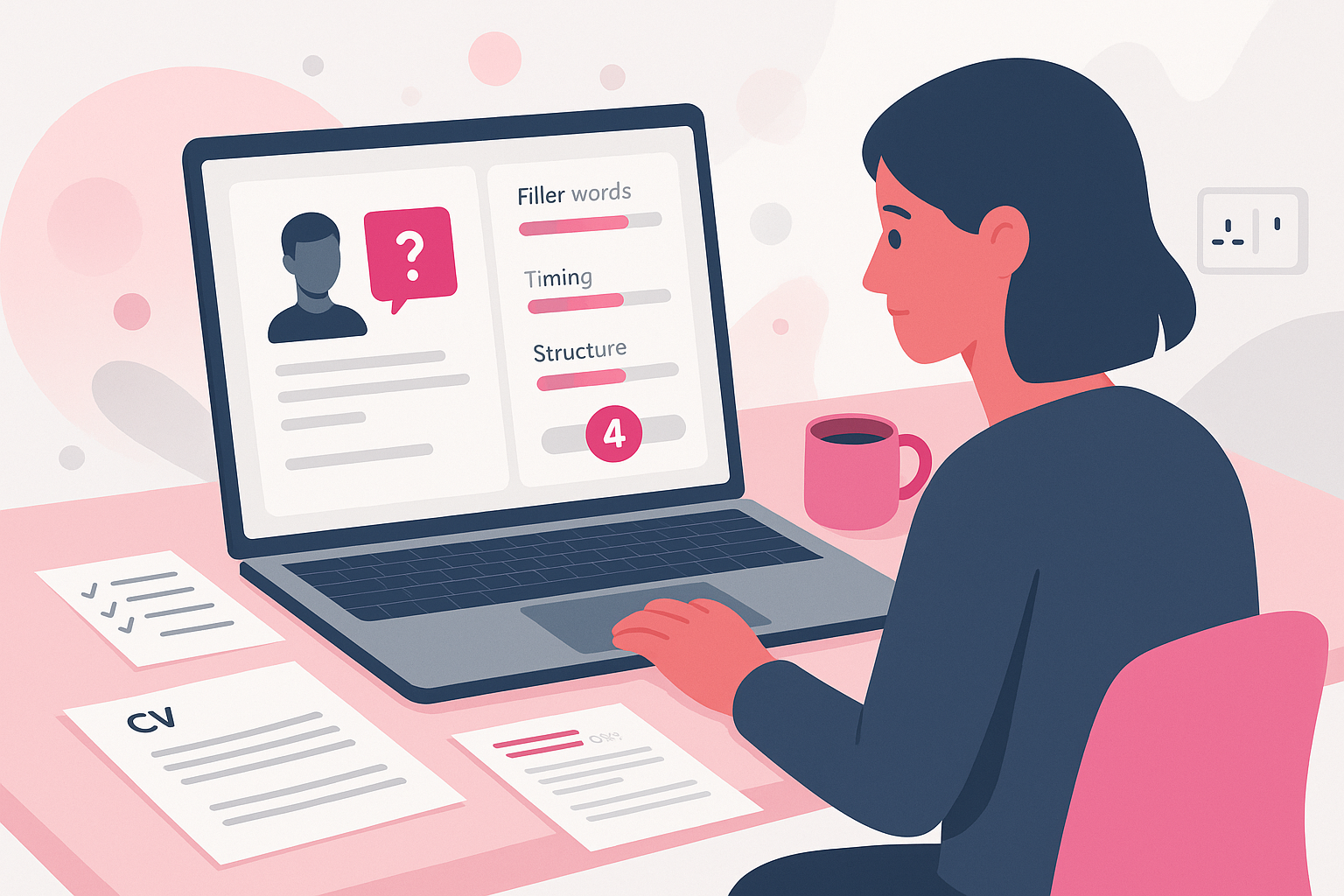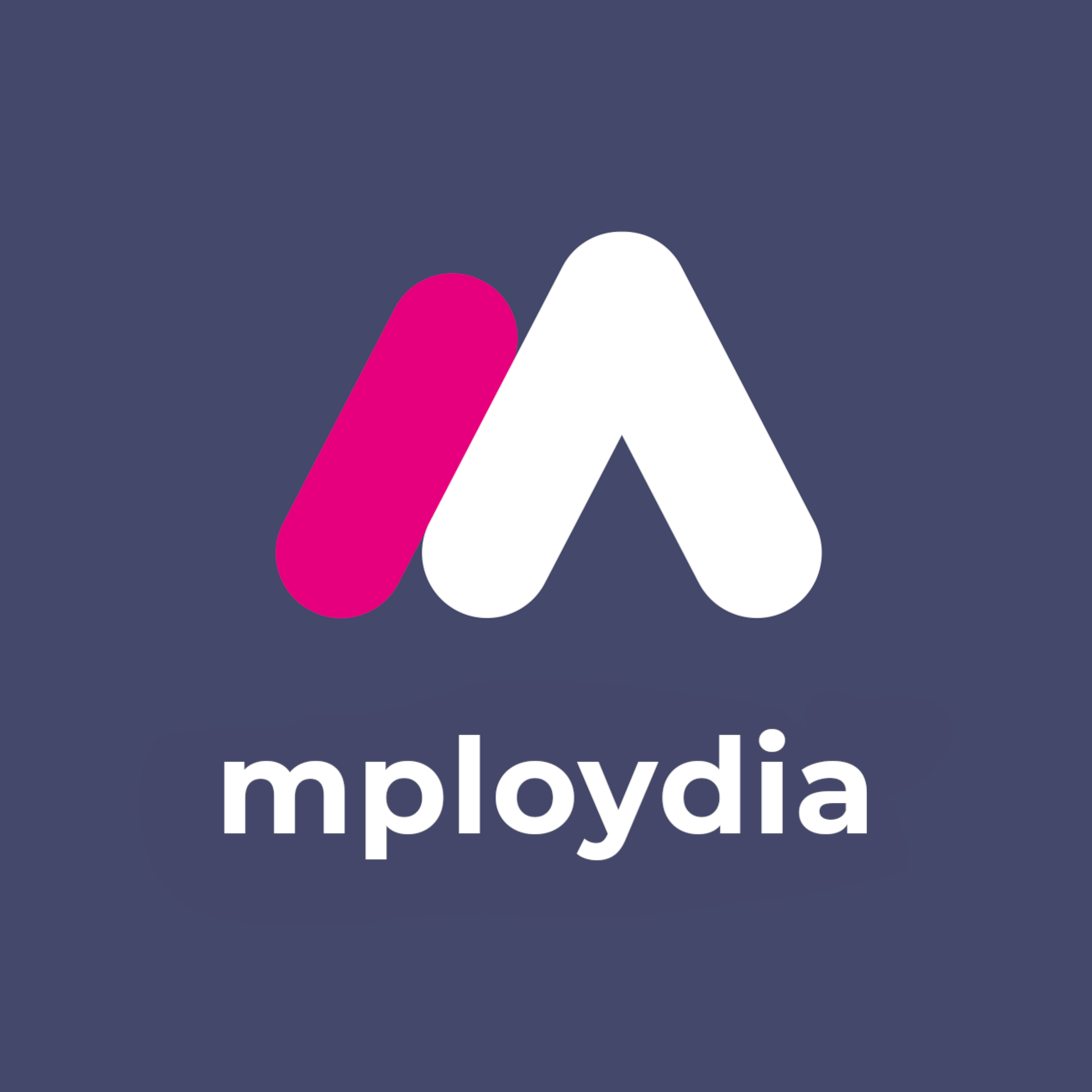
Build Interview Confidence with AI Mock Tools for Hiring
Why confidence wins interviews
Earned confidence comes from evidence. You know what will be asked, you have rehearsed credible answers, and you have corrected delivery mistakes. Interviewers can tell when your confidence is rooted in preparation rather than bravado. AI mock interview tools help you create that evidence quickly.
- Answer with structure and brevity
- Demonstrate fit using specific outcomes, not vague claims
- Stay composed under pressure and curveball questions
- Handle silence, follow-ups, and technical checks calmly
If that is not you yet, it can be. You need a system.
What AI mock interview tools can and cannot do
AI can help you practise efficiently, but it is not magic. Know its strengths and limitations so you use it correctly.
Strengths
- Unlimited practice on demand with realistic prompts and follow-ups
- Instant feedback on clarity, structure, filler words, pace, tone, and content
- Custom scenarios aligned to a job description and company values
- Recording and transcripts for precise self-review
Limitations
- Generic feedback if you do not provide context
- Overly generous scoring if you do not calibrate difficulty
- Weak domain depth unless you feed the right materials
- Cannot replicate human rapport dynamics perfectly
Your approach: feed it the right inputs, set high standards, and verify with human feedback where possible.
Set up your AI mock interview system in 60 minutes
You need three assets: a role brief, your evidence bank, and a scoring rubric.
1) Role brief
- Job description pasted into the tool
- Company values and recent news
- Competency framework if available
2) Evidence bank
- 8 to 10 STAR or CAR stories proving outcomes: Situation, Task, Action, Result
- Metrics for each story: numbers, timeframes, scale, tools used
- A CV aligned to the job description keywords
3) Scoring rubric
Score answers out of 5 over these dimensions:
- Structure: clear opening, 2 to 3 points, concise summary
- Relevance: directly answers the question and matches the competency
- Evidence: results quantified or specific
- Clarity: minimal filler, steady pace, strong signposting
- Impact: shows learning, collaboration, ownership
Set 4 as your target score for readiness. Anything at 3 or below requires revision.
Build a targeted question set in 5 steps
Generic practice wastes time. Tailor your practice to the role.
1) Extract competencies from the job description
- Examples: customer-focus, problem-solving, data literacy, teamwork, prioritisation, initiative, stakeholder management
2) Map 3 to 5 questions to each competency
- Problem-solving: “Tell me about a time you solved a tough problem.”
- Initiative: “Describe when you took ownership without being asked.”
- Teamwork: “How did you handle a conflict in a team?”
- Customer-focus: “How have you turned around an unhappy customer?”
3) Add role-specific scenarios
- Sales: discovery call, objection handling, pipeline hygiene
- Operations: process improvement, root-cause analysis, SLAs
- Data: cleaning messy data, insight storytelling, stakeholder requests
- Support: ticket triage, escalation, empathy under pressure
4) Include core classics and curveballs
- “Tell me about yourself.”
- “Why this company and role?”
- “Your biggest weakness.”
- “Explain a complex topic to a non-expert.”
5) Prioritise by impact
Start with questions most likely to appear in the first 15 minutes. Those set the tone and decide callbacks.
Design high-quality AI prompts for realistic practice
The quality of your AI practice is driven by your instructions. Use this template and adjust.
Core prompt template
“You are an interviewer hiring for [Role] at [Company] focused on [top 5 competencies]. Use the attached job description and my CV. Ask questions that test [competencies], with follow-ups challenging depth and evidence. One question at a time. Score each answer using this rubric: structure, relevance, evidence, clarity, impact. Give blunt, specific feedback and examples of stronger phrasing. Increase difficulty if I score above 4.”
Enhancements
- Paste your STAR stories and ask the AI to probe weaknesses
- Feed company news and values to generate culture-fit questions
- Set time limits: 60 to 90 seconds per answer
- Ask for silence and pressure tests to simulate real dynamics
A two-week practice plan that builds real confidence
Follow this plan. Do not skip days. Consistency matters more than volume.
Week 1: mechanics and structure
Day 1: Baseline assessment
- Record a full mock interview without prep
- Collect scores, note filler words, timing, rambles
- Identify top 3 weaknesses
Day 2 to 4: structure and brevity
- Drill “Tell me about yourself” to a crisp 60 to 90 seconds
- Practise 6 high-frequency behavioural questions
- Force STAR in under 2 minutes with quantified results
Day 5: delivery tune-up
- Work on pace, articulation, pauses, and signposting
- Use the AI to count filler words per minute
Day 6 to 7: targeted scenarios
- Practise 6 role-specific scenarios, escalating difficulty
- End with a 30-minute full mock under time constraints
Week 2: pressure, depth, and polish
Day 8 to 9: follow-up mastery
- For each answer, ask for 2 to 3 follow-up questions
- Prepare second and third layers of detail and metrics
Day 10: objections and weaknesses
- Practise gaps, low experience, failures, and weaknesses
- Build honest, accountable, growth-focused responses
Day 11: culture and values
- Practise “why us,” teamwork, conflict, ethics, inclusion
- Tie answers to company mission and outcomes
Day 12: panel simulation
- Ask the AI to simulate 3 interviewer personas
- Manage cross-questions and time-sharing
- Keep answers stakeholder-aware, not overly technical
Day 13: asynchronous video practice
- Record timed one-take answers with no retakes
- Review tone, background, lighting, and eye contact
Day 14: final full mock and debrief
- Run the toughest variant: curveballs, silence, multi-part questions
- Compare to Day 1. Confirm readiness or loop back on gaps
Master concise structure under time pressure
Use simple, repeatable structures. Do not improvise structure under stress.
For behavioural questions
- Hook: 1 sentence with context and your goal
- Actions: 2 to 3 high-impact moves you led or contributed to
- Results: quantified impact and what you learned
For technical or task questions
- Approach: your step-by-step method
- Trade-offs: options considered and why you chose one
- Outcome: result, metric, or validation
For “Tell me about yourself”
- Now: who you are and relevant capabilities
- Past: the 2 most relevant experiences and outcomes
- Future: why this role and what you plan to deliver
Time rules
- 60 to 90 seconds for most answers
- 2 minutes max for complex stories
- Stop talking when your point is made
Fine-tune delivery: what the AI will and will not fix
AI can flag issues, but you must do the work.
Voice and pace
- Aim for 140 to 160 words per minute
- Use purposeful pauses after key points
- Avoid uptalk; finish statements decisively
Clarity
- Replace filler with a silent pause
- Use signposts: first, second, finally; context, action, result
Body language on camera
- Camera at eye level, arm’s length
- Neutral background, good lighting, no distractions
- Eye contact with lens, not the screen
- Shoulders relaxed, gestures within frame
Turn feedback into measurable improvement
Create a simple scorecard in a spreadsheet.
Columns
- Question
- Structure score
- Relevance score
- Evidence score
- Clarity score
- Impact score
- Filler words per minute
- Duration of answer
- Key notes and next action
Process
- After each mock, log scores and 2 specific improvements
- Re-practise weak questions within 24 hours
- Promote a question to “ready” only after 3 consistent 4+ scores
Simulate different interview formats with AI
Asynchronous video interviews
- Set strict time limits and single-take rules
- Practise with 5 to 7 questions, no follow-ups
- Review lighting, framing, and start-stop confidence
Live video or in-person
- Add interruptions and clarifying questions
- Practise screen share for task walkthroughs
- Prepare shareable artefacts: slide, code snippet, diagram
Panel interviews
- Assign the AI multiple personas: hiring manager, peer, HR
- Practise redirecting and summarising across viewpoints
- Keep answers stakeholder-aware, not overly technical
Case or task-based
- Ask AI to generate a short case with data
- Work out loud: structure, assumptions, calculations
- Summarise insights and next steps, not just numbers
Technical assessments
- Feed job-specific questions and ask for rigorous follow-ups
- Explain how you validated your solution and handled edge cases
Answer tough questions with honest, strong framing
Gaps in experience
“I do not have direct experience in X yet. Here is how I have mastered similar areas quickly: [example]. I have already completed [course or mini-project] and can demonstrate [result]. My plan for week one is [specific steps].”
Weaknesses
- Pick a real skill, not a fake flaw
- Show mitigation and progress
- End with results
Example: “I used to over-edit reports. I implemented a timebox and peer review checklist, which cut cycle time by 30 percent without quality loss.”
Failures
- Own your part without excuses
- Show lessons and changes that prevented repeat issues
- Quantify the improvement since
Lack of experience as a first-time applicant
- Leverage projects, volunteering, internships, group work
- Emphasise the scale, tools, and outcomes, not titles
- Translate academic work into business impact
Leverage your CV and job description for precision
- Mirror keywords from the job description in your answers
- Show your tool proficiency with context, not name-drops
- Tie each story to a competency listed in the role
- Ask the AI to flag where your CV and answers do not align
Avoid the most common interview mistakes
- Rambling beyond 2 minutes
- Generic claims without numbers
- Overuse of jargon with non-technical interviewers
- Dodging follow-up questions
- Slouching, poor lighting, or noisy environments on video
- No questions at the end
Fixes
- Script and time your top 10 answers
- Add a metric to every story
- Prepare two versions of technical answers: expert and layperson
- Practise follow-ups that go one layer deeper
- Set up a simple video checklist and test before every mock
- Prepare three incisive questions about the role, team, and success metrics
Use AI responsibly: privacy and ethics
- Do not paste confidential data into tools
- Strip client names, remove proprietary numbers, anonymise sensitive context
- Use reputable platforms with clear data policies
- Keep copies of your transcripts and recordings locally
The 48-hour pre-interview sprint
T minus 48 hours
- Run a full mock replicating the company’s known format
- Rehearse “tell me about yourself,” “why us,” and 4 core behavioural stories
- Prepare closing questions focused on expectations, measures of success, and onboarding
T minus 24 hours
- Short 30-minute mock on weak spots only
- Check your setup: outfit, background, lighting, device, internet
- Print or save your 1-page interview cheat sheet
Cheat sheet contents
- 5 bullet points for “tell me about yourself”
- 8 STAR headlines with metrics
- Role-specific keywords and tools
- 3 closing questions
T minus 1 hour
- Breathing routine: 4-7-8 for two minutes to lower heart rate
- Read your first-story opener aloud twice
- Do not cram new material. Trust your practice
Measuring confidence and readiness
Confidence is not a feeling. It is a score. You are ready if:
- You consistently score 4+ on 80 percent of targeted questions
- Your filler words are under 3 per minute
- Your average answer length is under 90 seconds
- You can handle two follow-up layers without notes
- Your first 5 minutes are sharp: intros, role fit, motivation
If you do not meet these thresholds, keep practising. Do not hope. Execute.
Frequently asked objections and precise responses
“I sound robotic when I practise.”
- Write headlines, not scripts. Rehearse beats, not memorised sentences
- Vary examples. Keep the structure constant
“I do not have enough examples.”
- Mine university projects, volunteering, society roles, part-time work
- Build two mini-projects aligned to the role and practice talking through them
“The AI keeps praising me. I am not sure I am good.”
- Raise difficulty. Instruct the tool to challenge assumptions and demand metrics
- Cross-check with a human mentor or peer roundtable
“I freeze when they push me.”
- Train pauses. Answer with a 3-second silent plan: context, action, result
- Practise out loud under time limits until silence is comfortable
Make AI your coach, not a crutch
AI should accelerate feedback loops and increase reps. It cannot replace your judgement or integrity. Use it to expose gaps, strengthen delivery, and build the habit of concise, evidence-based communication. When the real interview starts, you will not need luck. You will have proof.
Action checklist: do this today
- Build your evidence bank with 8 STAR stories and metrics
- Create a scoring rubric and a tracking spreadsheet
- Paste the job description and your CV into your AI tool
- Generate 20 targeted questions with follow-ups
- Practise 30 minutes daily for 14 days
- Record, review, revise, repeat
Next Steps
Want to learn more? Check out these articles:
Turning Career Gaps Into Employer Value [Practical Guide]
Take control of your digital footprint when job hunting
Securing Credible Referrals Without Prior Work Experience
Check out our Advanced Employability Course for all the help you need to get your dream job, fast.


